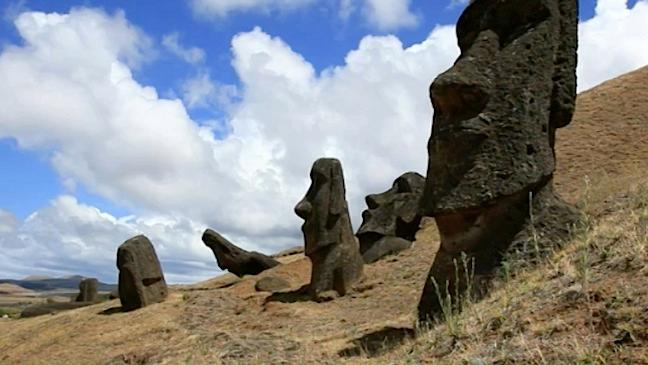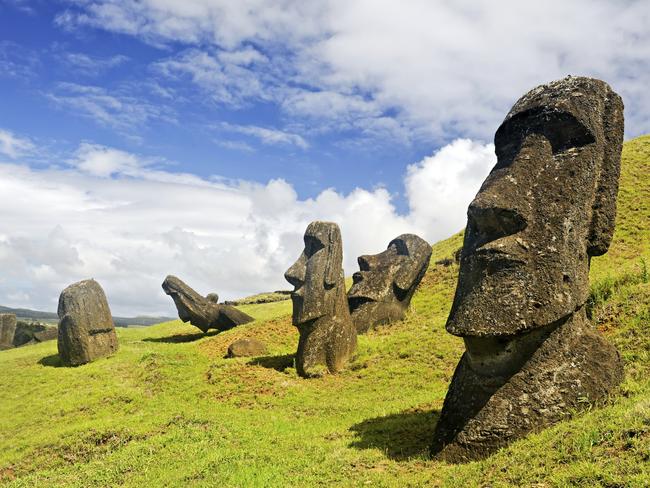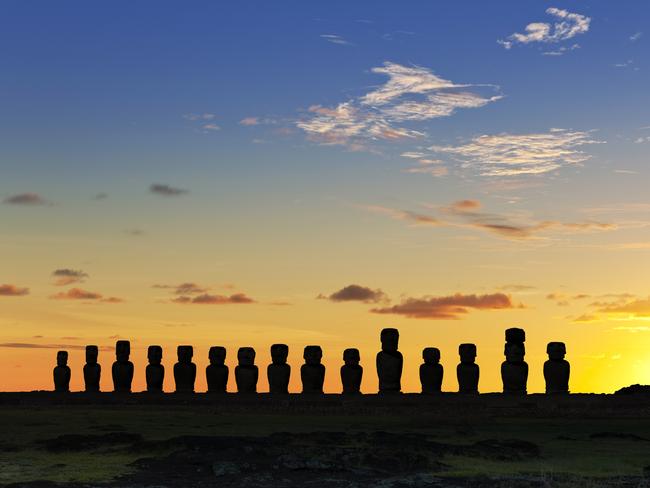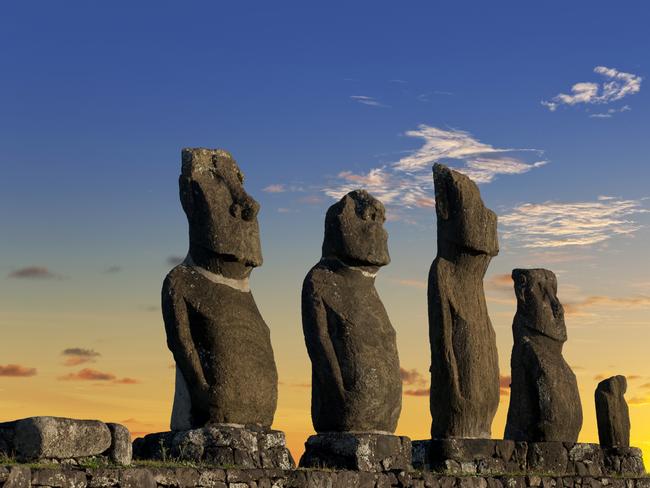What really happened to the people of Easter Island?
THERE are plenty of theories surrounding the demise of the people of Easter Island but now one researcher has claimed to have finally found the answer.

WHAT really happened to the native Polynesians who once lived on Easter Island?
Some researchers have argued that the Rapa Nui, as the islanders were known, died out after using up the natural resources on their tiny, 163-square-kilometre speck of land in the south-eastern Pacific Ocean. Others say the island’s population collapsed after Europeans brought diseases and pestilence — and took many survivors as slaves.

But new research suggests another possibility: that harsh environmental conditions on the island — from variations in rainfall to declining soil quality — caused a decline, but not a collapse, in the native population before the Europeans arrived in 1722, Live Science reported.
“The results of our research were really quite surprising to me,” Dr. Thegn Ladefoged, professor of anthropology at the University of Auckland in New Zealand and the co-author of a paper describing the research, said in an email to The Huffington Post. “In short, our research does not support the suggestion that societal collapse occurred prior to European contact due to physical erosion and productivity decline, but it does indicate that use of less optimal environmental regions changed prior to European contact.”

The researchers analysed and dated 428 obsidian tools and flakes of obsidian rock found at various archaeological sites on the island. By dating the tools and rocks, the researchers were able to determine when and how the ancient Rapa Nui population used land and natural resources in different parts of the island.
What did the researchers find? Land use and resources varied across the island, more so reflecting environmental constraints than an abuse of the environment.
“While we do not have direct population data, it is clear that people were reacting to regional environmental variation on the island before they were devastated by the introduction of European diseases and other historic processes,” Ladefoged said.
The researchers note in their paper that their work could be useful in the study of other prehistoric societies that experienced sudden collapses.
The paper was published online in the Proceedings of the National Academy of Sciences on January 5, 2015.

This article originally appeared on the Huffington Post and was reproduced with permission.



